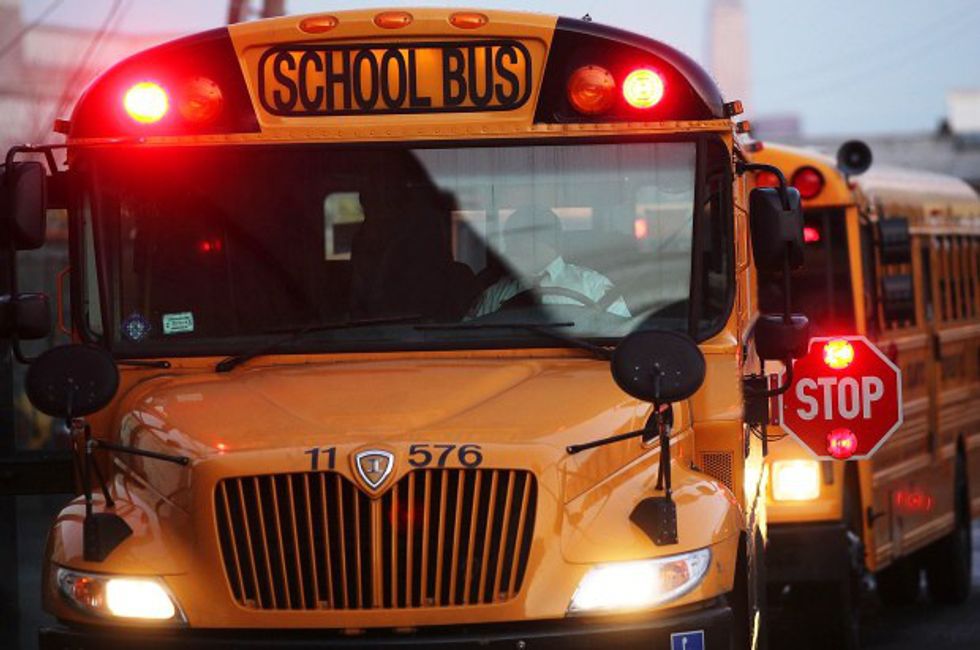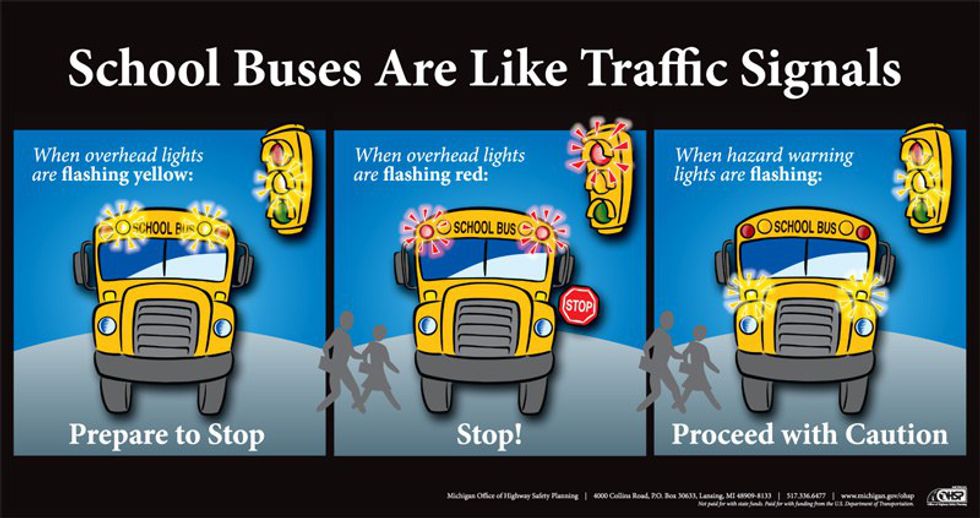At least most of us remember those days: waiting on the side of the street for the school bus to come and pick us up to bring us to school, finally seeing it coming up the road, hearing the screeching of brakes as it rolls to a stop in front of us, watching the door hiss open and stepping on to start a new day at school.
We all remember it from being the kid that gets on the bus, but what about if we’re driving on the road ourselves and see a school bus stopping to pick up or drop off a kid? When do we actually need to stop? What lights do we need to look out for? What do all the signals mean?
It’s a problem that we hear about way too often. We see on the news a video from the camera on the bus where a car just flies right on by when the bus is stopped, barely missing hitting the child coming off of the steps. In National Traffic and Highway Safety Administration (NTHSA) data from 2014, it was found that there were 174 school-age children who were killed in school-transportation-related accidents between 2003 and 2012. We know about things like this, and we wonder how someone could be so reckless with their driving. Yet, you can’t really blame them too much. Yes, it was dangerous for them to drive by a school bus like that when it’s parked on the side of the road, but how could they know that it was no longer safe for them to drive by the bus?
So many people just don’t know how to drive around school buses. It’s not something that’s taught in driver’s education, and if you never completely paid attention to what lights the bus driver was flashing as they stopped, then there would be no way to know when the driver actually opens and closes their doors to allow kids on and off the bus.
State troopers were asked what to do when school buses are stopping on the side of the road, and the first thing they said was to always err on the side of caution when going by a school bus. There’s no way that you could know their route and when they’re going to be stopping on the side of the road, or turning onto another street. Their routes are complicated and invasive at times to others on the road, and you always have to be prepared for things like that.
In terms of what to look for, the first thing you should notice when a bus is stopping on the side of the road is their yellow flashing lights. They’re similar to yellow lights at an intersection: technically, you should be stopping if you can for them. As soon as they’ve come to a complete stop, their yellow lights will change to red lights alternating on either side of the vehicle. A flashing stop sign will also extend from the driver’s side of the bus. If you ever see that, STOP. It’s against the law to pass by a school bus with their red lights on. You should stop no closer than 20 feet from the bus on either side, whether you’re facing the bus or behind it. You have no idea if the child is going to be going along the side of the road the bus is at, or if they’re going to be crossing the road to get to their house. Your car needs to stay stopped while the bus’s red lights are flashing, and can’t start again until the bus’s red lights are off and it’s started moving again.
One common thing that bus driver will do that often trips many drivers up is when they stop on the side of the road with their yellow lights flashing, but the lights never change to red. When a bus driver does that, they’re allowing cars behind them to pass around them. Bus drivers understand that every time they make a stop along the side of the road, they’re holding up traffic, and for someone who’s going behind them for a while, every stop can get pretty annoying. If you see a school bus stop with their yellow lights flashing, but the lights never change to red, then it’s ok to go past the bus. They’re just stopping for a second to let you pass so that you don’t need to keep stopping and waiting as kids get on and off the bus. This can be somewhat confusing, but the drivers are just trying to make your lives easier as you are going to where you need to go.
School buses were and are always going to be the symbols of school. Now we know what to do when we come across one.





















